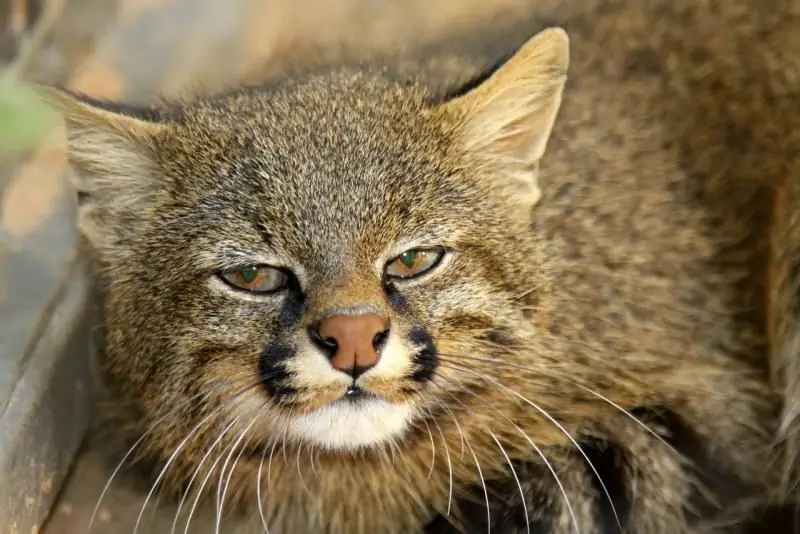
Table of contents:
- Author Bailey Albertson [email protected].
- Public 2023-12-17 12:53.
- Last modified 2025-06-01 07:32.
Pampas cat: description, habitat, keeping in captivity

The Pampas cat is a small predatory animal belonging to the genus of tiger cats. The second name is "grassy", because it mainly lives in pastures, mountain meadows and steppes. Despite the outward resemblance to an ordinary domestic cat, it is a dangerous predator and cannot be trained.
Content
-
1 External distinctive features of the Pampas cat
- 1.1 Table: description of the pampas cat
- 1.2 Video: Grass Cat in a Den
-
2 Pampas cat in the wild
- 2.1 Habitats
- 2.2 Nature and way of life
- 2.3 Reproduction and longevity
- 2.4 Video: grass cat kitten
-
3 Pampas cat in captivity
- 3.1 Character and behavior
- 3.2 Conditions of detention
- 3.3 Nutrition
External distinctive features of the Pampas cat
The Pampas cat outwardly resembles a wild European cat: the same small dimensions, thick and monophonic coat. However, unlike its relative, the grass cat has characteristic dark-colored stripes and rings located on the tail and at the bottom of the body.
For a long time, scientists ranked the animal as a subspecies Colocolo (in honor of the Auranian leader), but later singled it out as a separate species, Leopardus Pajeros. The reasons were the individual features of the structure of the skull and color. Despite the innovation, some of the researchers remained adamant, therefore both the first and the second classification are found in the scientific literature. Genetic studies of the predator in order to identify reliable data continue to this day.

Due to the unique color and specific structure of the muzzle, the Pampas cat was singled out as a separate species
Table: description of the pampas cat
| Parameter | Description |
| Weight | 3-7 kg |
| Body length | 50-75 cm |
| Tail length | 25 cm |
| Height at withers | 30-35 cm |
| Color | From silver-gray to black-brown. The top of the body is decorated with a reddish-brown pattern, there are black stripes in the abdomen, and dark rings on the tail. |
| Wool | Long, dense, in the region of the ridge it reaches a length of 7 cm. When colliding with an enemy, the wool rises on end, which gives the cat a more frightening look and visually increases its size. |
| Head | Large, convex, wide, in the nasal region the skull is compressed. |
| Ears | Large, sharp, without tassels at the ends. |
| Eyes | Large, oval, amber. |
| Limbs | Short, thick. |

The Pampas cat has a distinctive pattern of dark stripes on the legs and tail
Video: grass cat in a den
Pampas cat in the wild
Pampas cats remain poorly studied animals, because their secretive lifestyle does not allow full research. All information about their character, behavior, social structure and communication of individuals is based on the observations of scientists of predators living in zoos. It is not known for certain whether the obtained information coincides with the behavior of grass cats in nature.
Pampas cats are an endangered species, therefore hunting for them is strictly prohibited in Bolivia, Chile, Paraguay, Peru and Argentina according to Appendix II of the Convention on International Trade in Endangered Species of Wild Fauna and Flora (CITES). Today there are about 50 thousand representatives of this breed, but this figure is steadily declining due to poaching and killing of animals by aborigines.
Habitat
The habitat of the Pampas cat is exclusively South America, namely:
- Argentina;
- Peru;
- Uruguay;
- Bolivia;
- Brazil;
- Chile;
- Paraguay;
- Ecuador.
Because of the desire for solitude, the predator tries to choose areas remote from people: open plains, steppes, wooded mountain slopes. Sometimes found in deserts, mangrove swamps and in the highlands of the Andes (can live up to 5000 m above sea level).
Character and lifestyle
The grass cat is nocturnal: during the day it prefers to rest in a shelter, and in the dark it goes hunting. Thanks to keen eyesight and phenomenal scent, it easily tracks prey. The main diet is:
- mice;
- chinchillas;
- Guinea pigs;
- birds;
- bird eggs;
- lizards;
- large insects.
The predator finds food mainly on the ground, although it is not difficult for him to climb a tree. During the hunt, it can sit in ambush for a long time, and then attack the victim with one swift and sharp jump.

The grass cat attacks the victim rapidly, leaving her no chance of survival
The Pampas cat leads a solitary life and does not tolerate invasion of its territory. In case of danger, it climbs a tree, rears its fur and hisses, taking on a frightening look. He prefers not to mess with larger and stronger opponents.
Reproduction and life expectancy
Puberty occurs in Pampas cats at 2 years of age. Mating games take place from April to July inclusive, pregnancy lasts 80-85 days, so kittens are usually born in late summer or autumn. There are 2-3 kittens in the litter. For the first six months of life, babies need parental care. The upbringing is carried out exclusively by the female: the male does not take any part in this process. The expectant mother will equip the nest in advance for the offspring in the safest and most secluded place.
Kittens are born blind and helpless, at first they feed on mother's milk. Leaving the lair on hunting excursions, they keep close to the parent. They become independent at the age of 6 months.

The female is independently raising offspring
It is known that the average life span of a Pampas cat in captivity is 9-12 years, maximum - 16. How long a predator lives in its natural habitat is not known for certain. Presumably, the lifespan in the wild is half that in captivity due to attacks from larger animals and poaching of cats.
Video: grass cat kitten
Pampas cat in captivity
Pampas cats are rarely seen in zoos as they do not tolerate well being kept in captivity. Representatives of this species are stressed, often get sick, and hardly reproduce. They react very painfully to frequent contact with people, due to the large number of visitors they become especially aggressive and nervous. Even private zoos refuse to take on the maintenance of grass cats, since most of the individuals die in the shortest possible time.

In captivity, Pampas cats become aggressive
Character and behavior
The grass cat is a freedom-loving, wayward and rebellious animal, therefore it is impossible to tame it. Rarely shows affection for the owners, prefers not to let anyone into his territory, loves solitude. Poorly accustomed to domestication. Despite his cute and charismatic appearance, he has a non-contact character.
Instinctively, the animal avoids people, feeling from them a direct threat to life. When a person approaches, he shows aggression: hisses, rears up. If such psychological techniques are ignored, it fearlessly attacks the enemy, not measuring strength and size. Even when brought up at home from childhood, the grass cat rarely gets used to its owner and remains a dangerous predator forever.

When a person approaches, the grass cat shows aggression
From personal experience, I can say that attempts by beginners to tame wild animals almost in 100% of cases fail. Communication with predators requires certain knowledge and skills. Inexperienced owners do not measure their strengths and capabilities, which is why they endanger themselves and all family members. Most often, the proximity to wild representatives of the fauna leads to accidents and tragic events (when the animal bites a person to death or causes serious injury). As a result, the predator falls into the hands of poachers or to a private zoo, where it often dies.
Conditions of detention
In the wild, the Pampas cat lives on an individual territory of 50 sq. km. Unfortunately, with all the desire it is impossible to get a cage of this size, so the owners either combine several aviaries, or allocate several rooms for the predator at once. A prerequisite is the presence of a large number of various shelters, where the animal will rest during the day and hide from prying eyes.
From personal experience, I can say that all representatives of the feline family (from domestic cats to wild individuals) adore heights. Tall structures with a large number of branches or trees planted in an aviary perfectly imitate the natural environment and allow the animal to feel safe while on a hill. Climbing trees is an excellent exercise for a cat: it stretches the joints, helps to keep itself in good physical shape.
It is advisable not to bother a wild pet once again and not to impose your society on it. It should be remembered that any contact with humans is stressful for the predator. To extend his life, you need to limit communication as much as possible. Trying to pick up an animal is strictly prohibited.
A female expecting offspring needs complete isolation. During pregnancy and feeding kittens, she becomes especially aggressive, irritable, unpredictable. In the wild, even a predator larger than the Pampas cat cannot cope with an angry female protecting the babies.
Food
Small kittens under the age of six months feed on milk. In the wild, an adult grass cat feeds on small rodents, reptiles, and bird eggs. In captivity, his diet is similar. Dry prepared foods for domestic cats are not suitable because they do not contain enough nutrients.

The Pampas cat needs to be fed natural food
Like any predator, the Pampas cat needs live food. Absorbing the whole carcass with bones and entrails improves the digestion process. In addition, the predator needs to satisfy his hunting instincts, and feeding with semi-finished products and killed carcasses deprives him of this opportunity. I strongly recommend future owners to measure their strengths and capabilities before starting such a pet.
The Pampas cat is an exotic predator that is on the verge of extinction. Despite the similarity to an ordinary domestic cat, it cannot be tamed and cannot be trained. The predator trade is prohibited in many countries, so it is almost impossible to find it in nurseries. On the black market, the cost of a cat starts at $ 1,000. Due to its aggressiveness and non-contact nature, it is not suitable as a pet.
Recommended:
Pallas' Cat: Lifestyle Of A Cat, Habitat, Keeping In Captivity, Photo, Is It Possible To Tame A Wild Kitten
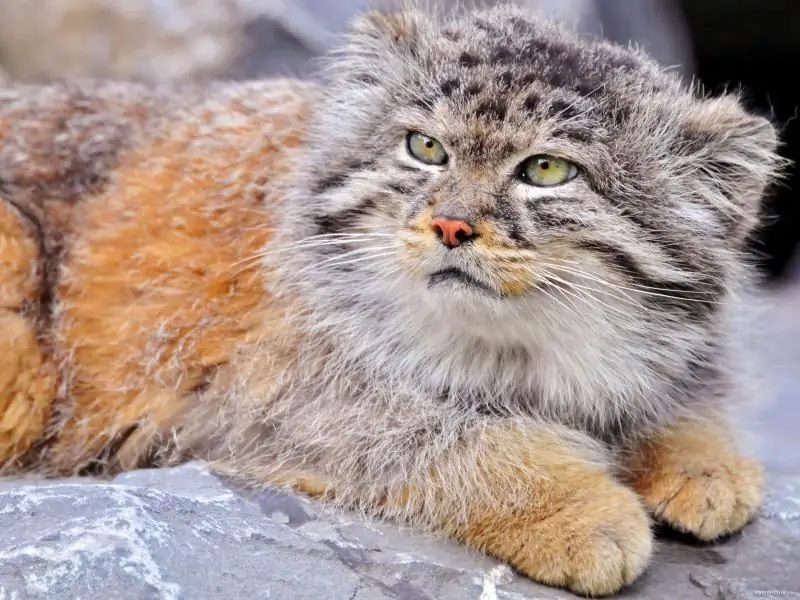
Wild cat manul: a description of the appearance of the animal, its life, character and behavior of the manul in the wild and when kept in captivity. Power features
Steppe Cat: Lifestyle, Habitat, Keeping In Captivity, Breeding And Feeding Of The Cat
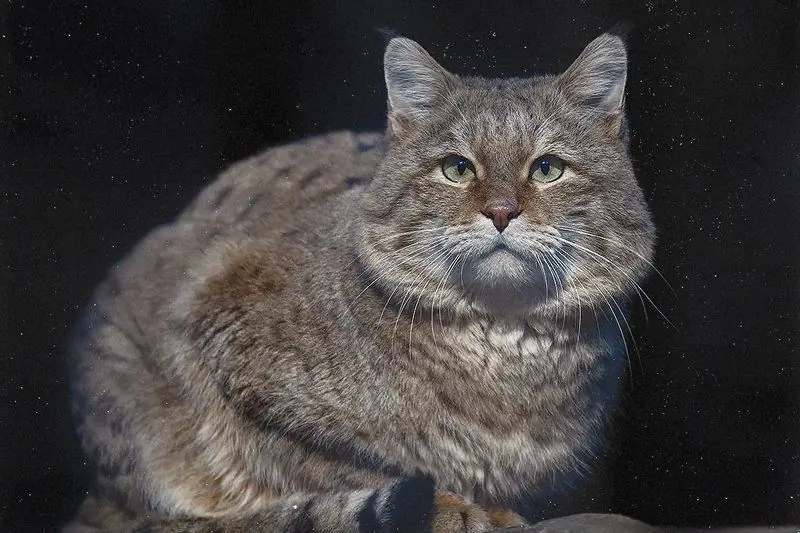
The appearance of a steppe cat. Habitat. Life in the wild. What do spotted cats eat? Reproduction and life expectancy. Wild cats in captivity
Andean Cat: Description Of The Breed, Nature And Habits, Habitat, Keeping In Captivity, Photo
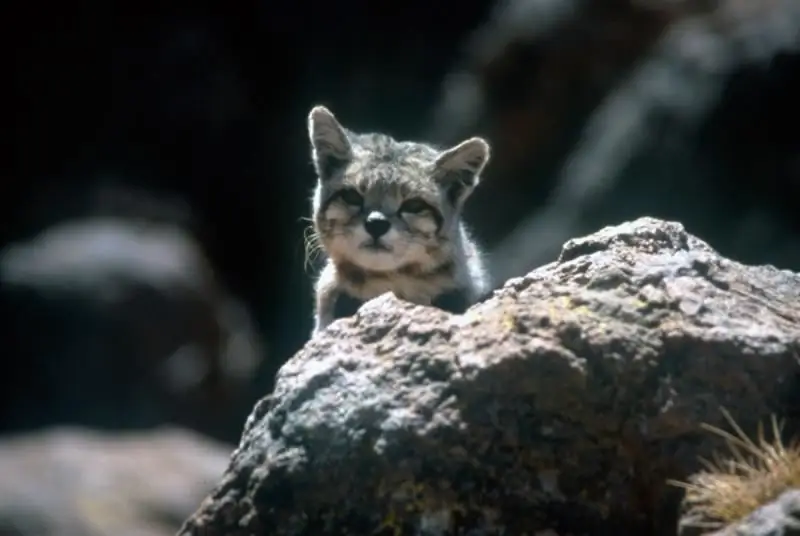
How this rare cat was discovered. What does an Andean cat look like, where it lives in nature, what kind of life it leads, can it be kept in captivity
Wild Forest Cat: Photos, Species And Names, Nature And Lifestyle, Breeding Cats
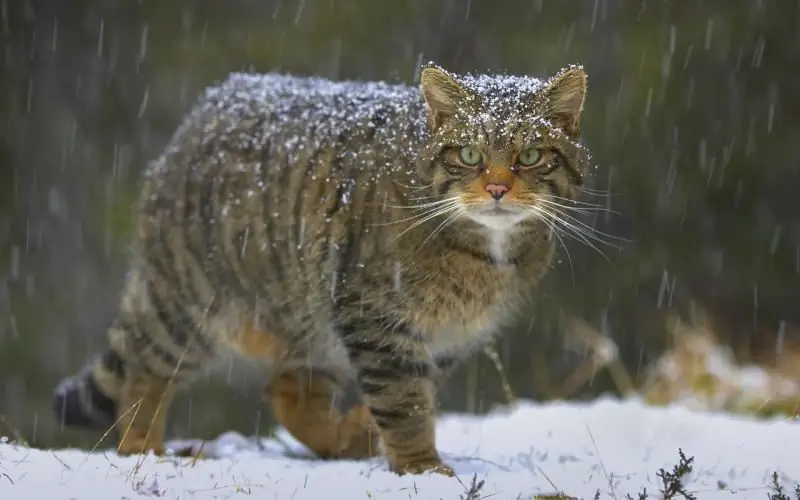
External features of a wild forest cat. The distribution area of the animal. The nature and habits of the predator. Reproduction issues. Wild forest cat in captivity. Reviews
Jaguar: Description Of The Appearance Of A Wild Cat, Character, Habitat And Lifestyle, Photo
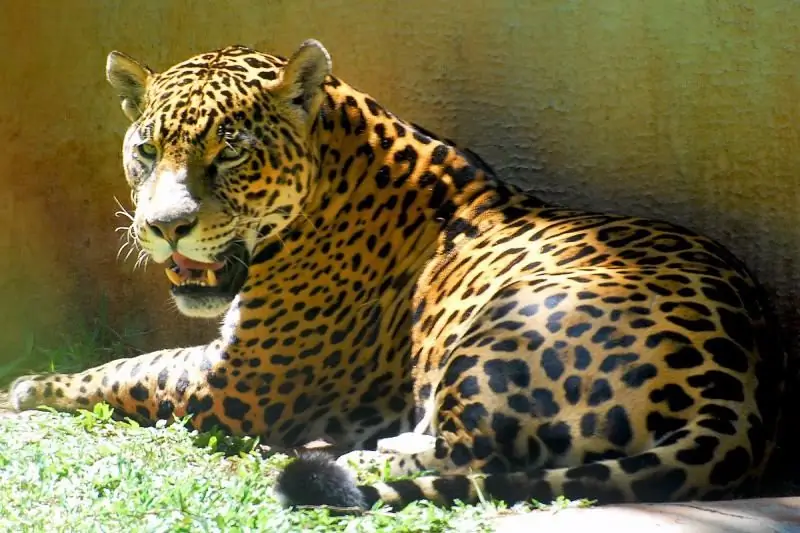
Who is a jaguar. Appearance and character. Habitat. How jaguars eat. Life in captivity
